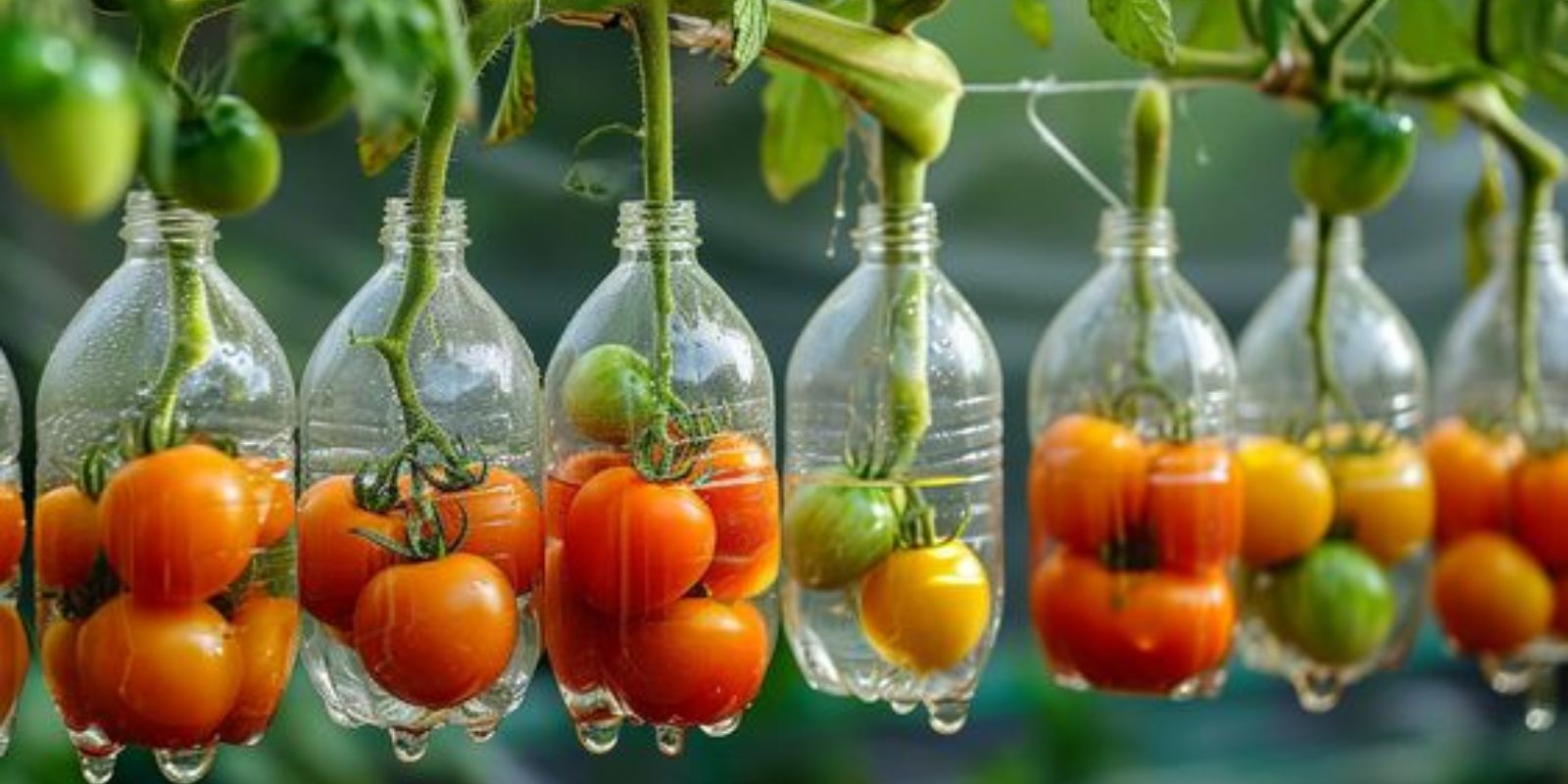Gardening enthusiasts are always on the lookout for innovative methods to maximize their yields and make the most of their gardening space. One such creative approach is growing tomatoes upside down. This technique not only offers practical benefits but also adds a unique visual appeal to your garden. In this article, we’ll explore why upside-down tomatoes can be a game-changer for your garden, provide a step-by-step guide to getting started, and discuss the numerous advantages of this unconventional method.
Introduction
Tomatoes are a beloved staple in many gardens due to their versatility and flavor. However, traditional tomato growing methods can be challenging, especially if you have limited space or are dealing with common garden issues such as pests and diseases. Growing tomatoes upside down is an innovative solution that addresses many of these challenges. This method allows you to save space, reduce pest problems, and enjoy a unique and efficient gardening experience. Let’s dive into the details of how to successfully grow upside-down tomatoes and the benefits it can bring to your garden.
Advantages of Growing Upside-Down Tomatoes
- Space Efficiency:
- Maximizes Vertical Space: Upside-down tomato planters make use of vertical space, which is especially useful for urban gardens, small backyards, or balconies.
- Increased Growing Area: By hanging your tomatoes, you free up valuable ground space for other plants, making your garden more productive.
- Improved Air Circulation:
- Reduced Fungal Diseases: Elevating tomato plants helps improve air circulation around them, reducing the likelihood of fungal infections such as blight and mildew.
- Better Sunlight Exposure: With plants hanging, they receive more direct sunlight, which can enhance photosynthesis and lead to healthier growth.
- Reduced Pest Problems:
- Less Contact with Ground Pests: Upside-down tomatoes are less accessible to ground-dwelling pests like slugs and snails, which can significantly reduce pest-related damage.
- Easier Inspection: It’s easier to spot and manage pests and diseases when plants are elevated, allowing for quicker intervention.
- Simplified Harvesting:
- Convenient Access: Hanging planters place tomatoes at a comfortable height for easy picking, reducing the need for bending or stretching.
- Less Soil Contact: Since the fruit doesn’t touch the soil, it’s less likely to suffer from rot or soil-borne diseases.
- Unique Aesthetic Appeal:
- Visual Interest: Upside-down tomato plants can add a unique visual element to your garden, patio, or balcony, creating a distinctive and eye-catching display.
- Creative Gardening: This method offers an opportunity to experiment with creative and non-traditional gardening techniques.
Step-by-Step Guide to Growing Upside-Down Tomatoes
- Select the Right Container:
- Container Choice: Choose a sturdy container with drainage holes, such as a hanging planter, bucket, or custom-built planter. Ensure it is large enough to accommodate the root system of your tomato plant.
- Drainage: Proper drainage is crucial to prevent waterlogging and root rot. Make sure your container has ample drainage holes or create additional ones if needed.
- Prepare the Tomato Plant:
- Variety Selection: Opt for compact or determinate tomato varieties, as they are better suited for upside-down growth. Varieties such as cherry or grape tomatoes work particularly well.
- Seedling Preparation: Start with healthy seedlings or small tomato plants. You can purchase them from a nursery or start them from seeds indoors.
- Planting:
- Insertion: Insert the tomato seedling through the bottom hole of the container, ensuring the roots are well spread inside the container. Gently pack the soil around the seedling to secure it.
- Soil Mix: Use a high-quality potting mix that retains moisture and provides adequate drainage. You may also add compost to enrich the soil with nutrients.
- Support and Watering:
- Hanging: Securely hang the container using strong hooks or brackets. Ensure it is placed in a location where it receives ample sunlight, preferably 6-8 hours of direct sunlight daily.
- Watering: Water the plant regularly to keep the soil consistently moist. Upside-down tomatoes can dry out faster than those grown in the ground, so monitor soil moisture closely.
- Maintenance:
- Pruning: Prune the plant as needed to remove excess growth and encourage better fruit development. Removing lower leaves and suckers can improve air circulation and reduce disease risk.
- Fertilizing: Feed your tomatoes with a balanced, water-soluble fertilizer every 2-3 weeks to ensure they receive the necessary nutrients for healthy growth and fruit production.
Troubleshooting Common Issues
- Fruit Development: If your tomatoes aren’t developing properly, check for adequate sunlight and proper watering. Ensure the plant is getting enough nutrients and avoid overcrowding.
- Pest Control: Monitor for pests and diseases, even with elevated plants. Use organic pest control methods if necessary, such as insecticidal soap or neem oil.
- Container Stability: Ensure the container is securely hung and stable. Adjust if needed to prevent it from swinging or tipping over.
Conclusion
Growing tomatoes upside down offers a range of benefits that can transform your gardening experience. From maximizing space and improving air circulation to reducing pest problems and simplifying harvesting, this innovative method has much to offer. By following the steps outlined in this guide and addressing common issues, you can enjoy a thriving tomato garden with a unique twist.
Are you excited to try growing upside-down tomatoes? Share your thoughts and experiences below—let’s embrace this creative gardening method and enjoy the fruits of our labor together! 🍅🌟

